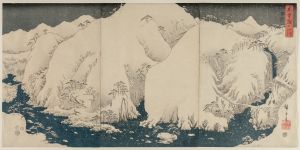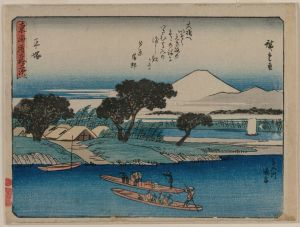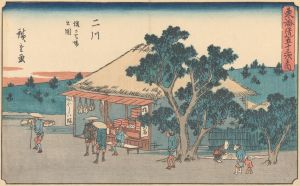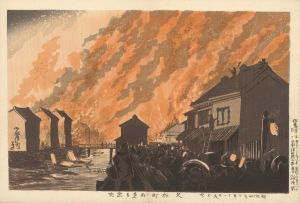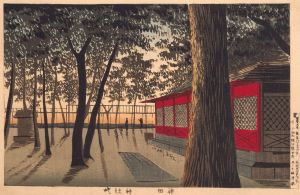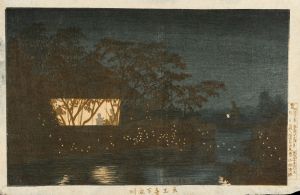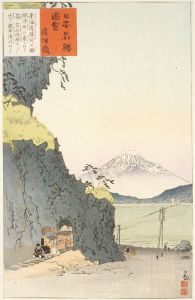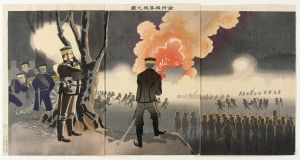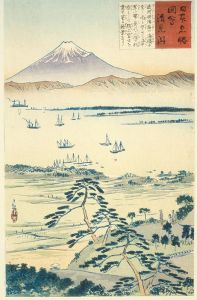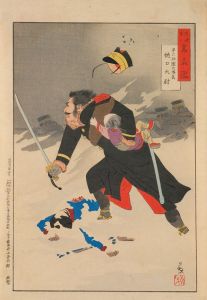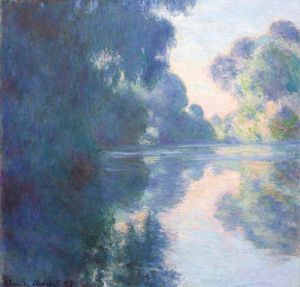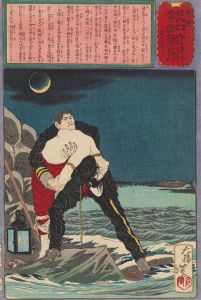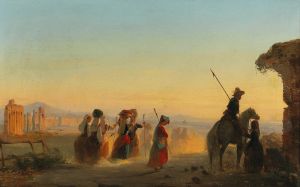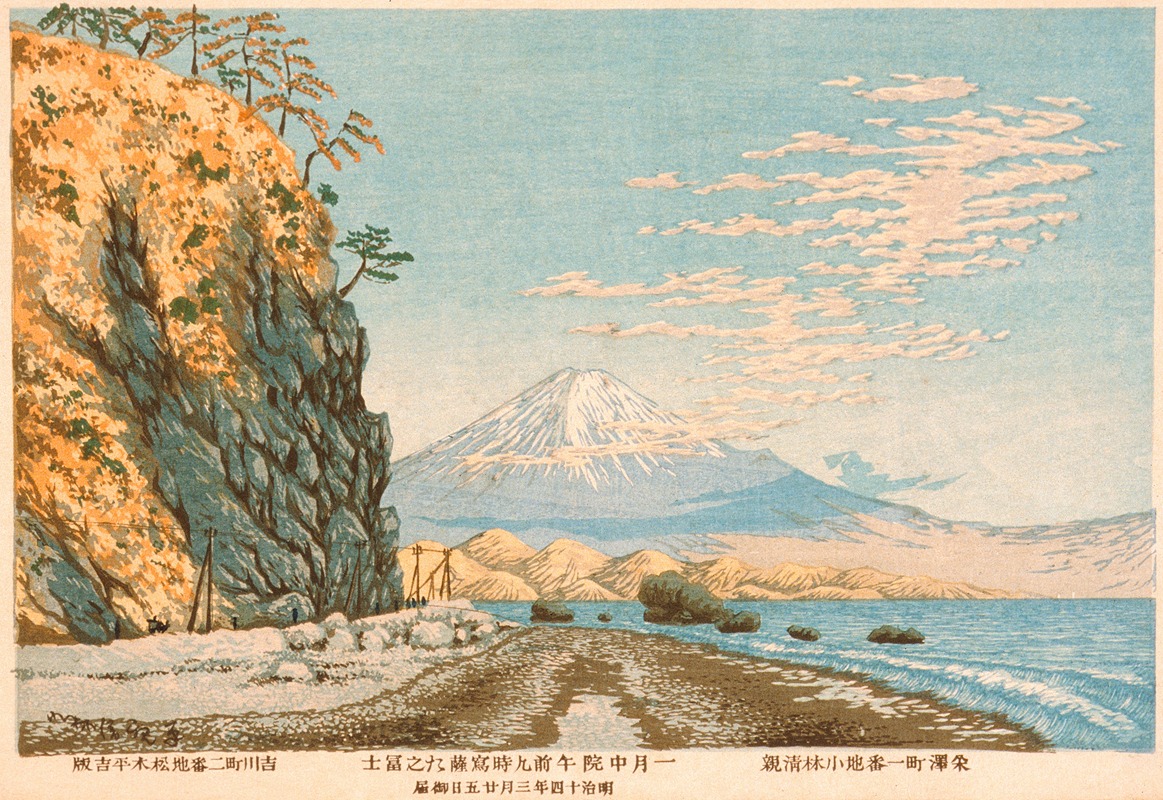
Mount Fuji From Satta, Sketched At 9 A.M. In Mid-January, 1881
A hand-painted replica of Kobayashi Kiyochika’s masterpiece Mount Fuji From Satta, Sketched At 9 A.M. In Mid-January, 1881, meticulously crafted by professional artists to capture the true essence of the original. Each piece is created with museum-quality canvas and rare mineral pigments, carefully painted by experienced artists with delicate brushstrokes and rich, layered colors to perfectly recreate the texture of the original artwork. Unlike machine-printed reproductions, this hand-painted version brings the painting to life, infused with the artist’s emotions and skill in every stroke. Whether for personal collection or home decoration, it instantly elevates the artistic atmosphere of any space.
Kobayashi Kiyochika (1847–1915) was a prominent Japanese artist known for his ukiyo-e woodblock prints and paintings, particularly those that captured the rapid modernization of Japan during the Meiji era. His works often combined traditional Japanese artistic techniques with Western influences, reflecting the cultural and technological changes of the time. One of his notable works is Mount Fuji From Satta, Sketched At 9 A.M. In Mid-January, 1881.
This artwork is a depiction of Mount Fuji, Japan's iconic and sacred mountain, as seen from the Satta Pass in Shizuoka Prefecture. The Satta Pass is a historically significant location, offering a dramatic view of Mount Fuji and the surrounding landscape. It was a well-known vantage point along the Tōkaidō, the historic road connecting Edo (modern-day Tokyo) and Kyoto. The pass had been a popular subject for artists, including earlier ukiyo-e masters such as Utagawa Hiroshige, whose works also featured this scenic spot.
Kiyochika's rendering of Mount Fuji from Satta Pass reflects his distinctive style, which often emphasized atmospheric effects and the interplay of light and shadow. The specific mention of "9 A.M. in mid-January" in the title suggests a deliberate effort to capture a precise moment in time, highlighting the artist's interest in natural light and its impact on the landscape. This focus on time and light aligns with Kiyochika's broader artistic approach, which was influenced by Western techniques such as perspective and shading, as well as by the introduction of photography in Japan.
The artwork is part of Kiyochika's broader body of work, which includes landscapes, cityscapes, and scenes of daily life. His art often conveyed a sense of quiet introspection and a deep appreciation for the natural and urban environments of Meiji-era Japan. While Kiyochika is best known for his prints depicting Tokyo's modernization, his landscapes, such as this view of Mount Fuji, demonstrate his versatility and ability to capture the timeless beauty of Japan's natural scenery.
The medium of this specific piece is not definitively documented, but much of Kiyochika's work from this period was created as woodblock prints or ink sketches. The exact location of the original artwork, if it still exists, is not widely recorded in public collections or archives. However, the piece remains an example of Kiyochika's skill in blending traditional Japanese aesthetics with modern artistic sensibilities.
Mount Fuji From Satta, Sketched At 9 A.M. In Mid-January, 1881 exemplifies Kiyochika's ability to depict the harmony between Japan's natural beauty and the changing times. It stands as a testament to his unique contribution to Japanese art during a transformative period in the nation's history.





